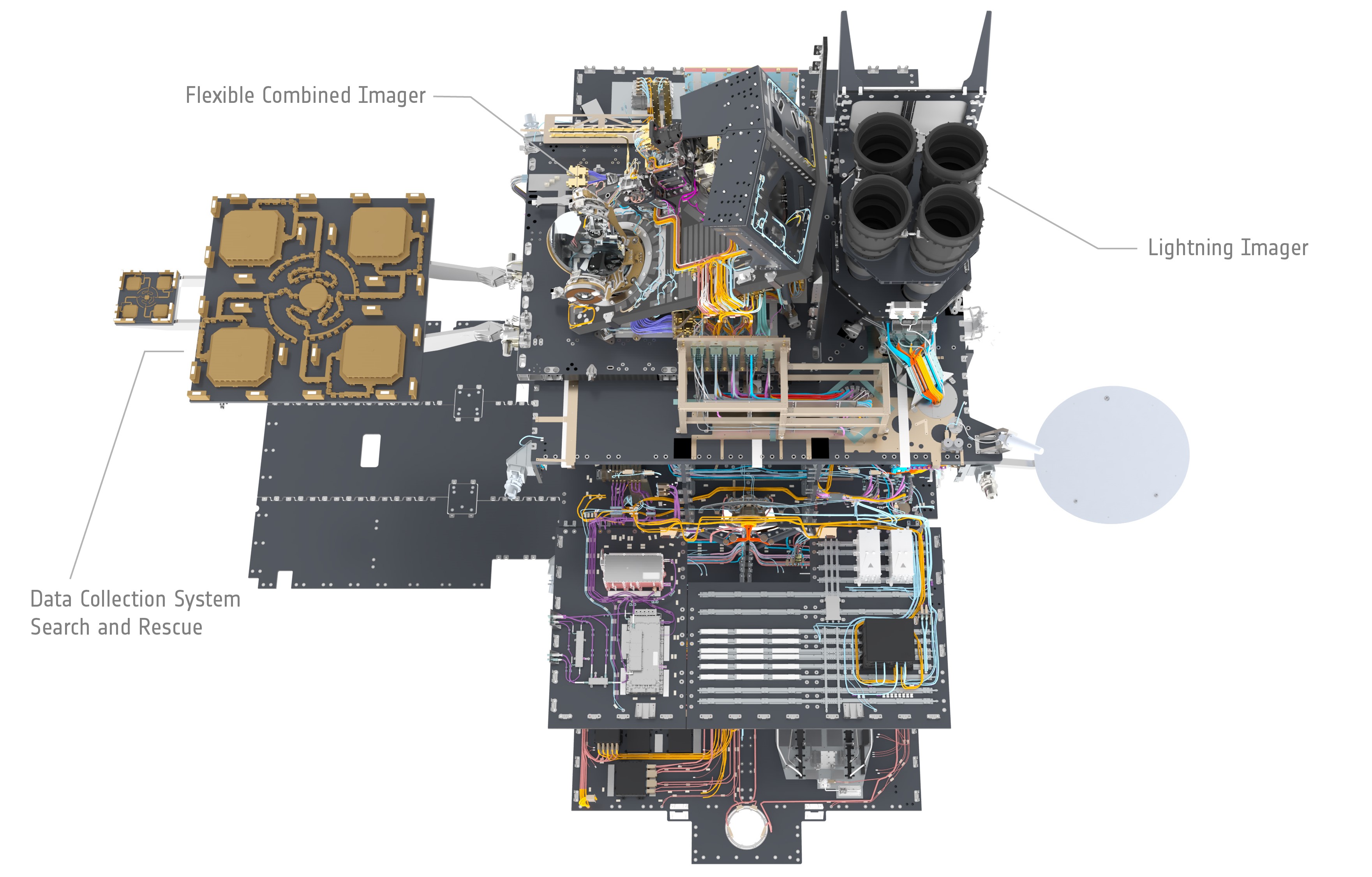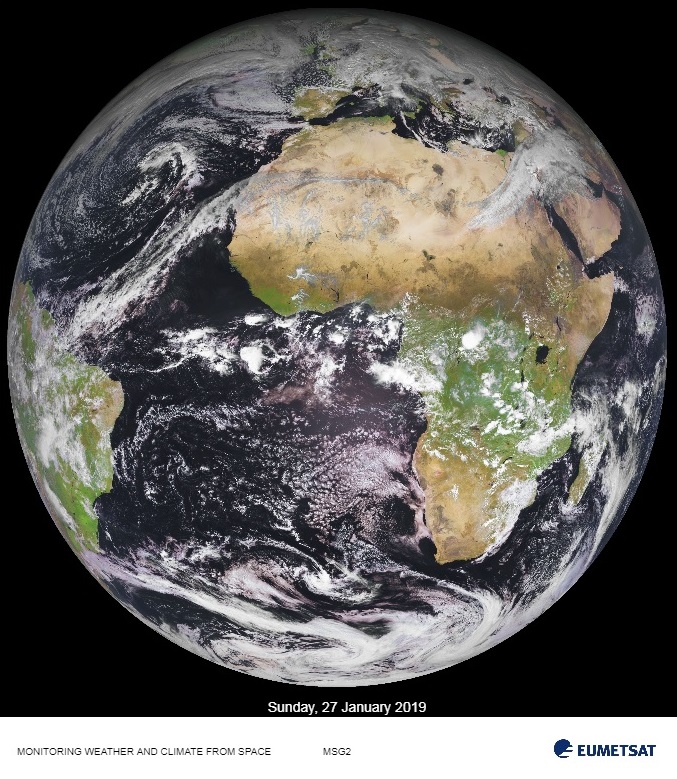Meteosat Third Generation satellites will take weather forecasts to the next level

Once in orbit around Earth, the Meteosat Third Generation satellites will help to forecast the weather better than ever before! Copyright: ESA/Mlabspace, CC BY-SA 3.0 IGO
14 December 2022
When was the last time you checked the weather forecast? It is something many of us do every day, but have you ever stopped to think about how we predict the weather? Most of our best information comes from satellites orbiting Earth, taking photos and measurements that help tell you whether to pack your suncream or umbrella!
For the last 45 years, satellites called Meteosats have been orbiting our planet, monitoring the weather by viewing and collecting data from the entire side of the Earth visible to them. Now it is time for new and improved Meteosats – called Meteosat Third Generation – to blast off into space and continue this important work! The first of these is being prepared for launch soon, and gradually it will be joined by five more. Working together, they will improve our weather forecasting abilities.

Meteosat Third Generation satellites contain lots of scientific instruments. Copyright: ESA/Mlabspace, CC BY-SA 3.0 IGO
What makes these latest Meteosats extra special are the new scientific instruments they carry. One of these, called The Flexible Combined Imager, can take pictures in higher resolution and so see more detail than older Meteosats. Another device is the Lightning Imager, which will constantly look out for lightning, allowing for storms to be spotted earlier than has been possible before. An extra gadget will collect data from remote science beacons on Earth. Meteosat Third Generation satellites can also detect emergency beacons activated by people in trouble, helping search and rescue teams to save lives!
Meteosat Third Generation satellites will be in operation for the next 20 years, bringing a new generation of weather forecasts to people all around the world.
Cool fact: The Lightning Imager is so sensitive that it will be able to spot lightning strikes in full daylight!





